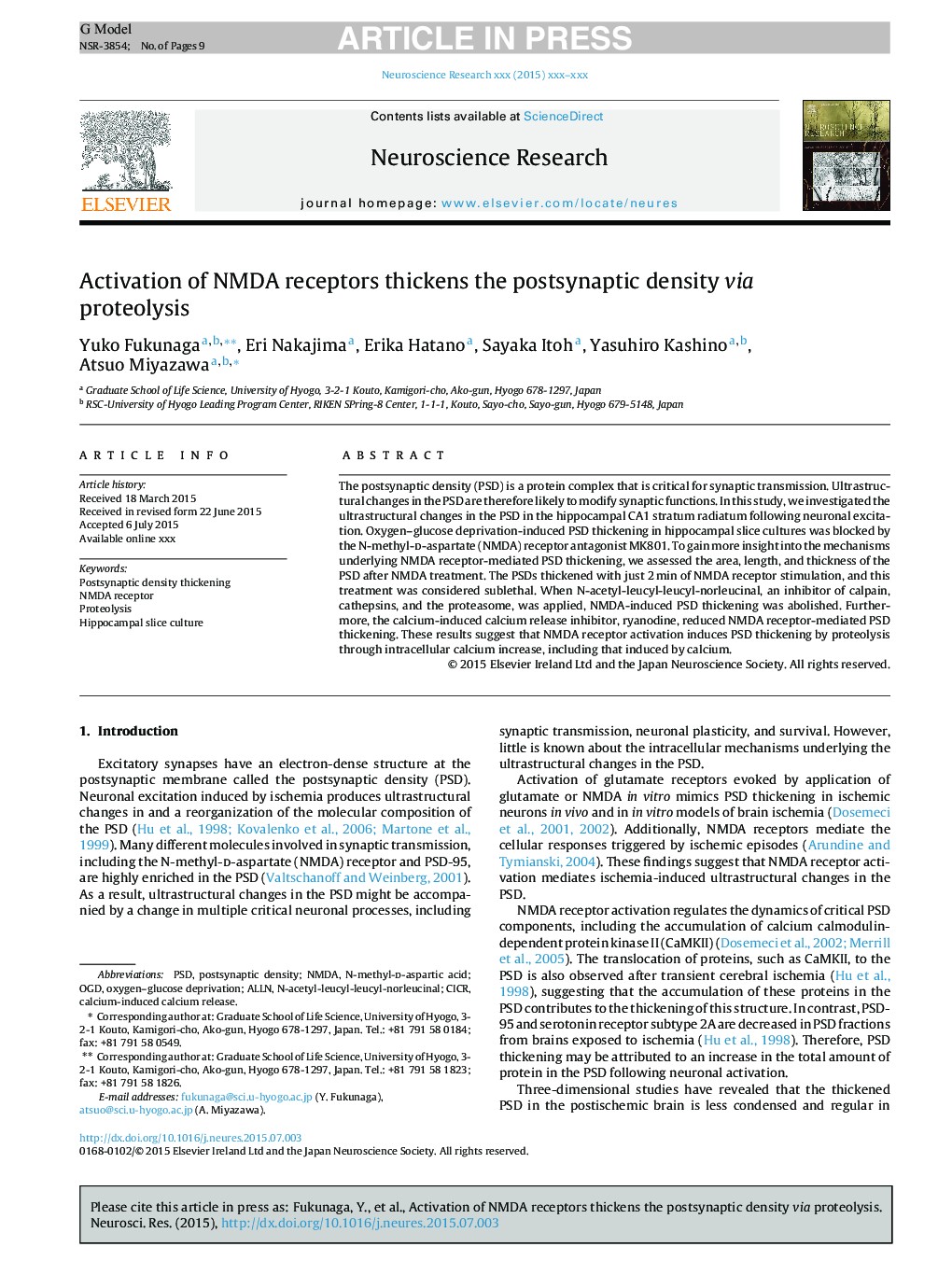| Article ID | Journal | Published Year | Pages | File Type |
|---|---|---|---|---|
| 6286038 | Neuroscience Research | 2015 | 9 Pages |
Abstract
The postsynaptic density (PSD) is a protein complex that is critical for synaptic transmission. Ultrastructural changes in the PSD are therefore likely to modify synaptic functions. In this study, we investigated the ultrastructural changes in the PSD in the hippocampal CA1 stratum radiatum following neuronal excitation. Oxygen-glucose deprivation-induced PSD thickening in hippocampal slice cultures was blocked by the N-methyl-d-aspartate (NMDA) receptor antagonist MK801. To gain more insight into the mechanisms underlying NMDA receptor-mediated PSD thickening, we assessed the area, length, and thickness of the PSD after NMDA treatment. The PSDs thickened with just 2Â min of NMDA receptor stimulation, and this treatment was considered sublethal. When N-acetyl-leucyl-leucyl-norleucinal, an inhibitor of calpain, cathepsins, and the proteasome, was applied, NMDA-induced PSD thickening was abolished. Furthermore, the calcium-induced calcium release inhibitor, ryanodine, reduced NMDA receptor-mediated PSD thickening. These results suggest that NMDA receptor activation induces PSD thickening by proteolysis through intracellular calcium increase, including that induced by calcium.
Keywords
Related Topics
Life Sciences
Neuroscience
Neuroscience (General)
Authors
Yuko Fukunaga, Eri Nakajima, Erika Hatano, Sayaka Itoh, Yasuhiro Kashino, Atsuo Miyazawa,
